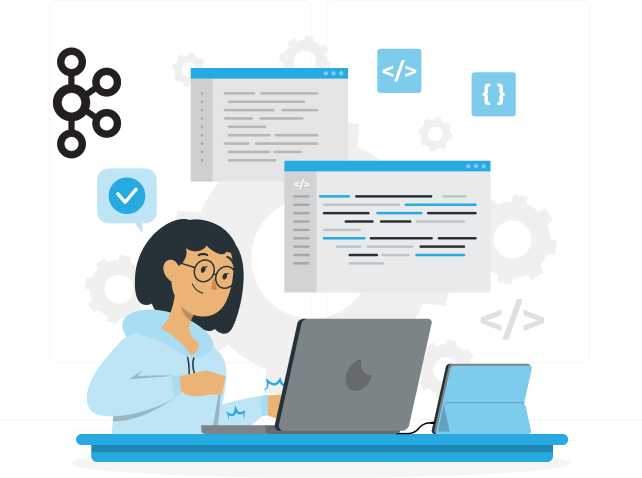Effective financial analysis is becoming increasingly important to organizations in today’s fast-paced, data-driven business environment to improve the processes of making decisions and fuel growth. Financial analysis software is a tool that can be used to analyze financial data, forecast future trends, and make informed strategic decisions. A comprehensive guide to the best available financial analysis software provides insight into their features, benefits, and how they can help power businesses toward achieving their financial goals.
Significance of Financial Analysis Software for Businesses
Financial analysis software helps in the proper management of funds by an organization. The global financial analytics market is expected to grow to $23.04 billion by 2032.

Source: Global Market Insights
With automated various financial processing, it enables businesses to:
- Accuracy is Improved:
Automated calculations minimize the risk of mistakes or errors by humans; hence, financial reports can be highly relied upon and accurate. This becomes very important in industries where accuracy and compliance are strict.
- Efficiency Improved:
Data collection and reporting will become smoother, saving time and resources so that finance teams can focus on strategic initiatives rather than sitting there entering all the data.
- Real-Time Insights Facilitated:
Live financial data allow an organization to react promptly to changes in the market, while decisions made will be based on current information rather than reports that are already outdated.
- Collaboration:
Most of the financial analysis tools have integrated collaborative features that enable teams to work effectively and thereby upgrade inter-departmental communication and transparency.
Key Features of Financial Analysis Software For Businesses:
Some of the following key features should be considered while selecting the kind of financial analysis software to install:
1. Data Integration
Proper and in-depth ability to interface with several data sources is the way to go for an efficient financial analysis. From the best financial analysis tools to functionality, accounting systems, ERP solutions, CRM platforms, and more, interfaces must be easy to integrate into business applications for an all-inclusive view of performance. Therefore, this offers real-time data updates and erases manual entry of data.
2. Advanced Reporting Capabilities
The strength of reporting capabilities enables a company to get in-depth financial reports after just a few seconds. Narrow down the applications to those that provide custom templates for reports, automatically generate reports, and present information graphically- charts and graphs. Advanced reporting capabilities will enable tracking of all KPIs, time-based trend analysis, and visualization of the data to stakeholders.
3. Predictive Analytics
Predictive analytics capabilities can help organizations predict future financial trends with the aid of historical data. It is also quite useful for budgeting and planning cash flow or evaluating threats that change with any decision taken by the business organization. Predictive analytics allows sophisticated machine learning algorithms to determine patterns in data that otherwise do not fit a human brain pattern.
4. Scenario Planning
Scenario planning tools enable users to develop “what if” scenarios that can be used to assess the potential impact of different business decisions. This in turn enables the organization to prepare for different outcomes and adjusts its strategy accordingly for those events that have a potential probability of happening. For example, an organization can simulate how an increase in interest rates or a change in market demand will affect its bottom line.
5. User-Friendly Interface
Usability should ensure that finance professionals can easily make use of the software. Unintuitive design creates usability for the product and reduces the time taken to learn for new users. Seek out software which provides menus that are not so tricky to navigate, allows inserting tooltips, and easy access to functionalities that are probably used the most.
6. Collaboration Tools
Collaboration capabilities that finance teams can use to work effectively also enable the share of insights and reports in real-time. Search for comment threads, version control, task assignments, and notifications in the software so that teammates are automatically updated on updates or changes.
Types of Financial Analysis Software
Financial analysis software comes in many forms designed for specific business needs:
1. FP&A Software
Financial Planning & Analysis (FP&A) software specializes in budgeting, forecasting, and reporting. It enables organizations to let groups of people stay close to their financial planning processes by offering them scenario modeling, variance analysis, and the ability to do collaborative budgeting.
2. Financial Dashboard Software
The financial dashboard software creates visual representations of all the various KPIs that would reveal the financial health of an organization. With this interactive visualization, further exploration could discover KPIs like revenue, expenses, profitability, cash flow, and the list goes on; insights are gained in real time, helping to facilitate quicker decisions.
3. Credit Analysis Software
Credit analysis software helps banks and lending institutions evaluate prospects’ creditworthiness by determining factors such as credit history, stable income, amount of debt, and general risk profiles. Mostly, this has automated scoring systems to make it easier.
4. Financial Spreading Software
Financial spreading software is specifically built for banks to facilitate the efficient analysis of borrower financial statements. It automatizes the spreading of income statements and balance sheets into standard formats, so that the data can easily be compared across various borrowers or periods.
5. Financial Data Analytics Software
This makes the pool of collected data interestingly usable for organizations-in ways that in turn raw numbers into actionable insights, driving strategic initiatives forward so effectively. The outcomes of these desires begin to be achieved over time. Many of these tools also carry advanced analytics capabilities like machine learning algorithms for predictive modeling.
Benefits of Using Financial Analysis Software
There are quite a number of benefits that can be derived from financial analysis software used in organizations. For instance,
1. Improved Decisions
The access to real-time information and new analytical tools enables better decision-making that improves their strategic standing. Visualization of complex data sets helps with rapid identification of trends and immediate response during top management decision-making processes.
2. Efficiency
Automation of routine tasks such as the bulk entry of data or report generation helps save time and minimize the level of manual errors from finance teams, which means that more of their time is available to focus on high-value activities such as strategic planning or risk management.
3. Enhanced Interoperability
Interoperability capabilities enable the finance teams to communicate and collaborate with stakeholders; ensuring that everyone shares the same understanding about financial strategies and goals while also providing a platform for cross-functional insight sharing.
4. Enhanced Compliance
Most analysis tools have in-built compliance checks that help organizations keep in line with regulatory compliance, thereby reducing the risk of penalties associated with non-compliance and maintaining the proper reporting practices throughout operations defined there!
Selecting the Proper Financial Analysis Software
While selecting the most appropriate financial analysis software for your organization, consider these factors:
1. Identify Your Needs
Evaluate the particular needs of your organization regarding budgeting, forecasting, reporting, or credit analysis before taking options available on the market today! The clarification of these needs helps narrow down choices more efficiently!
2. Evaluate Features
Compare different software solutions with respect to what they have in terms of functionalities-look particularly at what each solution offers in terms of strong reporting functionality/predictive analytics/scenario planning tools/ease of use, etc, that well suits identified needs!
3. Check for Integration Capabilities
Ensure that the chosen solution integrates well with other systems such as accounting software/ERP solutions for smoother workflow without stoppages through manual transfers between different platforms.
4. Read User Reviews
Analyze users’ review/testimonials from other organizations that have implemented chosen products in the past-this is a user experience of using them while also indicating some demerits encountered during the process.
5. Request for Demos or Trials
Take advantage of free trials/demos offered by vendors to get firsthand experience of functionalities before committing fully-these ‘hands-on’ practice helps assess usability/fit in your organizational environment better than just reading descriptions themselves!
Conclusion:
The right financial analysis software can do wonders for an organization’s management of finances and provide critical insights that yield strategic decision-making! An organization, by examining specific needs, evaluating different options against significant features such as data integration capabilities, advanced reporting functionalities, and predictive analytics tools, among others, in the form of user reviews, can make informed decisions in choosing the ideal solution!
Whether you are a small business looking for the specific FP&A software for small business or an enterprise requiring a comprehensive financial planning & analysis software, the right choices can be found with diverse requirements in various industries today! You can reach out to our experts to build a financial analysis software for businesses that can enhance operational efficiencies and gives teams the needed actionable insights required for achieving desired outcomes over time!

Start a Project with Ajackus











































































